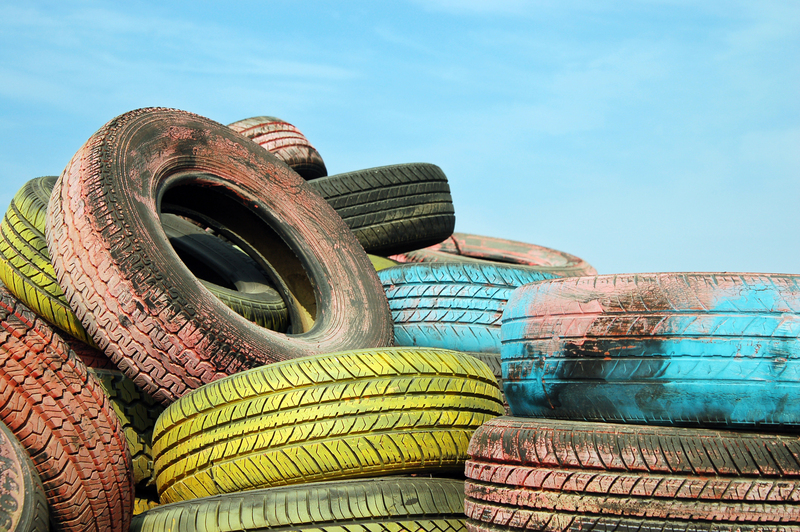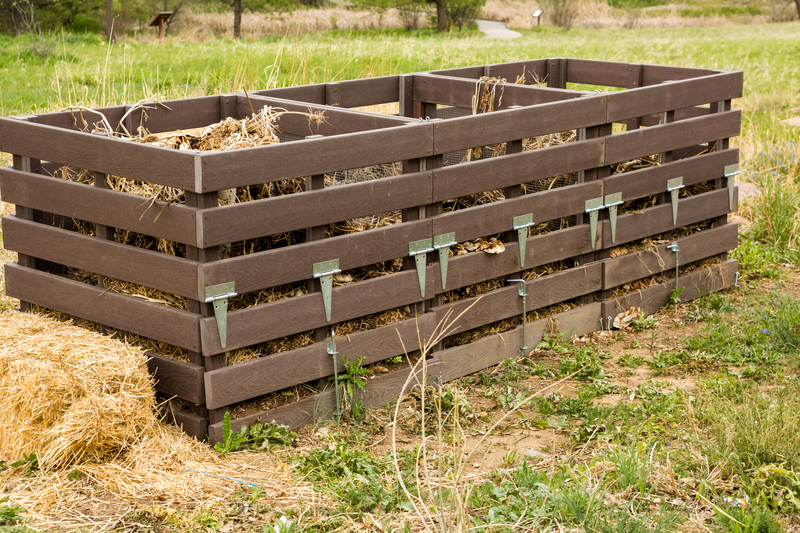Taking Personal Responsibility for Safe PPE Waste Disposal
The global response to health crises, including the recent COVID-19 pandemic, has made the use of personal protective equipment (PPE) an everyday necessity for millions of individuals worldwide. From face masks and gloves to protective gowns and face shields, these items are essential in protecting ourselves and others from pathogens. However, with increased usage comes the critical challenge of managing PPE waste responsibly. Taking personal responsibility for PPE waste disposal is not just about cleanliness -- it is about safeguarding public health, protecting the environment, and fostering a culture of safety in our communities.

Why Safe Disposal of PPE Matters
Safe and sustainable disposal of PPE waste is crucial for several reasons:
- Environmental Protection: Improperly discarded PPE can pollute land and waterways, posing serious risks to wildlife and ecosystems.
- Public Health: Mishandled PPE waste can become a conduit for the spread of infectious diseases, endangering community health workers, cleaners, and the general public.
- Social Responsibility: Practicing proper PPE waste management reflects a commitment to community well-being and conscientious citizenship.
In this informative article, we will delve into the importance of personal responsibility for safe PPE waste disposal, outline best practices, address common challenges, and offer actionable tips to empower readers in making a positive impact.
Understanding PPE Waste: What Does It Include?
To implement safe disposal practices, it's first necessary to understand what constitutes PPE waste. Common examples include:
- Face masks (surgical masks, N95 respirators, reusable cloth masks)
- Disposable gloves (latex, nitrile, vinyl)
- Face shields & goggles
- Protective gowns, aprons, and coveralls
- Shoe covers and head covers
PPE Waste: The Scale of the Problem
The surge in global PPE usage since the COVID-19 outbreak has resulted in unprecedented levels of waste. According to scientific research and environmental watchdogs, millions of tons of PPE waste are generated monthly. Alarming reports highlight that used masks, gloves, and other protective gear are commonly found littering streets, landfill sites, waterways, and oceans. This environmental impact threatens marine life, chokes up urban sanitation systems, and increases the risk of disease transmission.
The Role of Individuals: Taking Responsibility Seriously
While governments and health organizations have established policies and infrastructure for hazardous waste management, a significant portion of PPE waste is generated outside formal healthcare settings -- in homes, schools, offices, and public spaces. Every individual has a role to play in ensuring PPE is disposed of safely and responsibly.
Here's why personal accountability is non-negotiable:
- Your actions directly impact public and environmental health.
- Proper disposal practices set a positive example for family, friends, and colleagues.
- Collective efforts drive cultural change and encourage broader compliance.
Best Practices for Safe PPE Waste Disposal
1. Safe Handling of Used PPE
When removing and handling used PPE, minimize the risk of contamination and disease transmission:
- Wash or sanitize hands before and after touching used PPE.
- Handle only the edges or straps of masks and gloves to avoid contact with contaminated surfaces.
- Do not reuse disposable PPE. Single-use items are designed for one-time application only.
2. Proper Separation and Containment
Dispose of PPE separately from other household waste to reduce cross-contamination:
- Place used PPE in a dedicated, leak-proof plastic bag. Tie the bag securely once full.
- Store the PPE waste bag in a safe location away from children or pets before collection.
- If you or a household member is sick or under quarantine, double-bag the PPE waste and mark it for safe handling.
3. Follow Local Waste Management Guidelines
Consult your local municipality's PPE disposal rules.
- Some areas designate special bins for COVID-19 waste or PPE items.
- Do not place used PPE in the recycling bin. Most PPE materials are not recyclable through standard curbside programs and can contaminate recycling streams.
- Contact your municipal waste management authority for up-to-date advice on hazardous waste collection schedules and drop-off locations.
4. Never Litter or Flush PPE
Avoid littering at all costs. Discarded PPE in public spaces, parks or waterways is a serious health and environmental hazard. Additionally, flushing masks or gloves down toilets can cause blockages and sewer overflows, leading to costly infrastructure repair and water pollution.
Promoting Environmentally Friendly PPE Disposal
1. Choose Reusable PPE When Possible
Using reusable and washable masks, face shields, and gowns significantly reduces the volume of PPE waste generated. When using reusable gear, follow manufacturer instructions for thorough cleaning and disinfection between uses.
2. Consider Eco-friendly PPE Alternatives
Some manufacturers now offer biodegradable PPE made from natural fibers or innovative materials such as polylactic acid (PLA) bioplastics. While not yet widespread, supporting eco-friendly PPE options can help reduce long-term environmental impacts.
3. Advocate for Circular Solutions
Join or support organizations developing PPE recycling programs or upcycling initiatives, where items are treated, sanitized, and repurposed for other uses. For example, certain types of masks and gowns can be processed into construction materials, road surfaces, or protective barriers.
Overcoming Common PPE Waste Disposal Challenges
Many people encounter obstacles in disposing of PPE waste responsibly, such as lack of information, limited access to hazardous waste bins, or confusion about regulations. Here are some practical strategies to address these challenges:
- Educate yourself and others: Stay informed about safe PPE waste disposal practices through trusted organizations (e.g., WHO, CDC, local governments).
- Spread awareness: Share disposal guidelines with family, friends, and colleagues. Use posters, social media, and community meetings to encourage compliance.
- Advocate for better infrastructure: If your locality does not have adequate waste management systems for PPE, appeal to local leaders for designated disposal bins, clear signage, and regular collections.
Workplace Responsibility: Encouraging Safe PPE Waste Disposal at Work
Employers and building managers play a pivotal role in fostering responsible PPE waste handling:
- Install clearly labeled bins for PPE waste at entry points, toilets, and high-traffic areas.
- Train employees on correct donning, doffing, and disposal procedures.
- Display posters reminding workers of disposal protocols.
- Schedule regular waste collection to minimize overflow and hazards.
Legal and Ethical Considerations
Many jurisdictions have introduced regulations addressing infectious waste disposal since the onset of the pandemic. Ignoring these laws can result in substantial fines or even prosecution. From an ethical perspective, safe PPE waste disposal demonstrates respect for your neighbors and the planet.
Protecting Waste Handlers and Sanitation Workers
Those involved in collecting and processing trash are at heightened risk of exposure to infectious PPE waste. Proper binning, sealing, and clear labeling of PPE trash can greatly reduce health risks for these essential workers. Consider writing "Used PPE / Hazardous Waste" on bags containing masks and gloves to alert handlers.
The Role of Education and Community Engagement
Local leaders, educators, and public health officials should promote community programs and workshops on PPE waste management. Several schools and organizations provide toolkits, demonstration sessions, and neighborhood cleanups focused on safe disposal of PPE. Engaging in these activities deepens personal commitment and makes a bigger difference.
Top Tips for Taking Personal Responsibility for PPE Waste
- Always dispose of PPE in a sealed plastic bag. Never leave items loose or uncontained.
- Never throw used masks or gloves in recycling bins.
- Double-bag waste from sick family members or those in quarantine.
- Teach children the importance of safe PPE waste handling.
- Clean reusable masks and face shields regularly and as instructed.
- Avoid burning PPE waste at home, as this can release toxic fumes and contribute to air pollution.
Frequently Asked Questions About Safe PPE Waste Disposal
Can I recycle my used masks and gloves?
No, most PPE--including single-use masks and gloves--cannot be recycled through conventional recycling schemes due to potential contamination and the nature of their materials.
What if I do not have access to a designated PPE waste bin?
Seal used PPE in a plastic bag, tie it securely, and dispose of it in your regular waste. Never place PPE in recycling bins.
Are cloth masks considered PPE waste?
Cloth masks are reusable and should only be discarded if damaged or worn out. Until then, wash them regularly according to manufacturer guidelines.
Why is double-bagging PPE waste recommended for sick or quarantined individuals?
Double-bagging provides an extra layer of protection against leakage and contamination, safeguarding waste handlers and others who may come into contact with the trash.

Conclusion: Your Commitment Makes a Difference
Every mask, glove, or gown disposed of properly is a step toward healthier communities and a cleaner environment. By taking personal responsibility for safe PPE waste disposal, you signal respect for public health, nature, and future generations. Practice and promote the habits outlined in this guide, and inspire others to do the same.
The next time you change your mask or finish your shift in protective gear, remember: safe PPE waste disposal starts with you.
Resources and Further Reading
- World Health Organization: Infection Prevention and Control for the safe management of waste
- U.S. CDC: Cleaning and Disinfecting Your Facility
- United Nations Environment Programme: Environmental Concerns of COVID-19 Plastic Waste
